In 2010, the Red Shirt Riots take place in Bangkok, an event which saw many of the city’s public buildings put to flame. One casualty of this unfortunate set of circumstances was the Zen Tower in the Central World Complex. The podium was utterly destroyed while flames and smoke in their endless search upwards destroyed interior furnishings and finishes. ZENSE, one of the city’s most popular restaurant/bars, located on the top floor of the Zen Tower, was not spared. As a result DEPT, the original designers were called back to perform the refit/design. Below is a description of the work provided by the architects.
ZENSE, one of the city’s most popular restaurant/bars, located on the top floor of the Zen Tower, was not spared. As a result DEPT, the original designers were called back to perform the refit/design. Below is a description of the work provided by the architects.
Our challenge is how to remind our guests of the splendor of the original ZENSE while not bringing back the memory of the unfortunate incident. We decided to enhance our original spatial design in a more vibrant color scheme and stronger articulation. We continued our original approach of fusing together four design disciplines: fashion design, interior design, landscape architecture, and architecture. The essence of landscape architecture in interior spatial articulation is also maintained. To reflect the character of the project owner, ZEN Department Store, we introduced the dynamic world of fashion into the static domain of architecture, by adapting the aesthetic and technique of pleating fabric into architectural elements and functionality.
To reflect the character of the project owner, ZEN Department Store, we introduced the dynamic world of fashion into the static domain of architecture, by adapting the aesthetic and technique of pleating fabric into architectural elements and functionality.
In interior space, pleating elements are found throughout; from pleated stairs and railing, pleated seating, pleated performing stage, to pleated roof planes over show kitchens. To create an energetic flow of the space and to obscure all piping underneath exposed ceiling slabs, pleating planes of fine steel lines were added as floating planes below the ceiling. These planes are also applied in floating dining pavilions which give a unique picture frame to the Bangkok city skyline. To highlight the interface between fashion and architecture, elements of fashion were introduced in the furniture and interior finishing. Hound-tooth patterning was used not only on fabric but also on dining tables’ stone tops. Layers of patterned & translucent partitions in restrooms were also inspired by lace fabric.
To highlight the interface between fashion and architecture, elements of fashion were introduced in the furniture and interior finishing. Hound-tooth patterning was used not only on fabric but also on dining tables’ stone tops. Layers of patterned & translucent partitions in restrooms were also inspired by lace fabric.
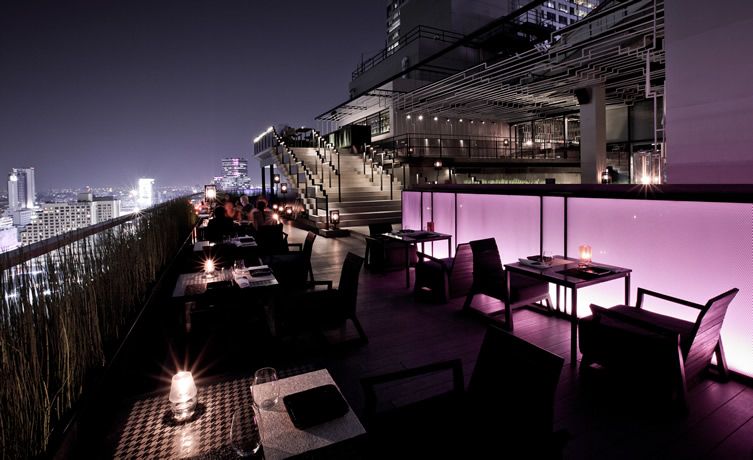
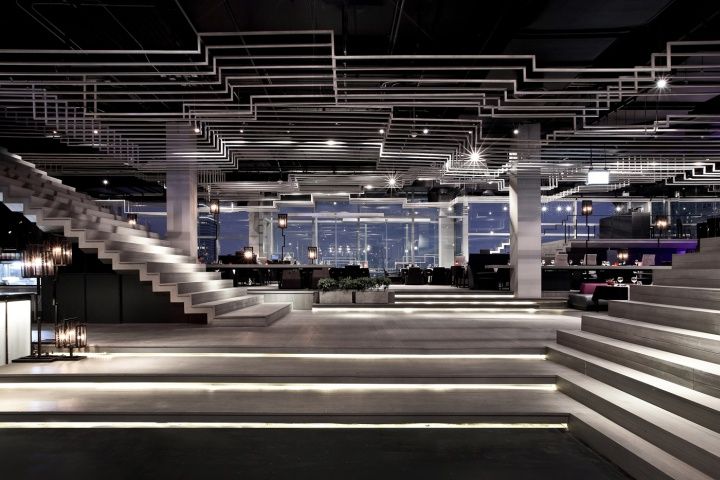
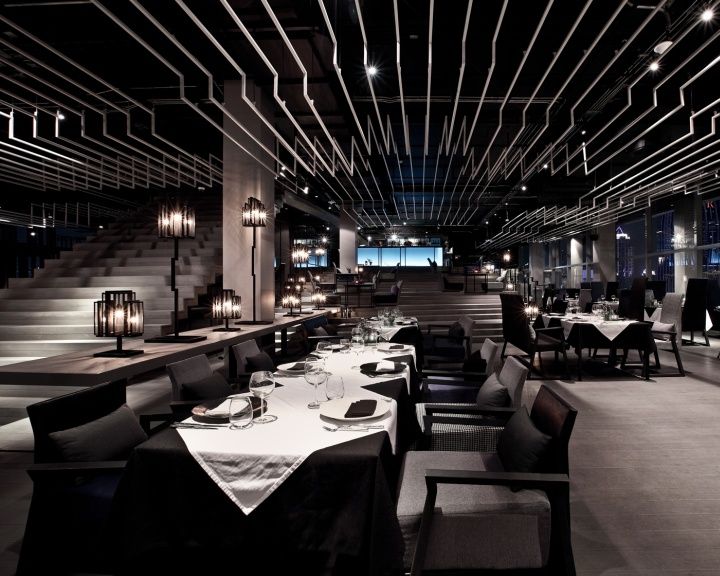
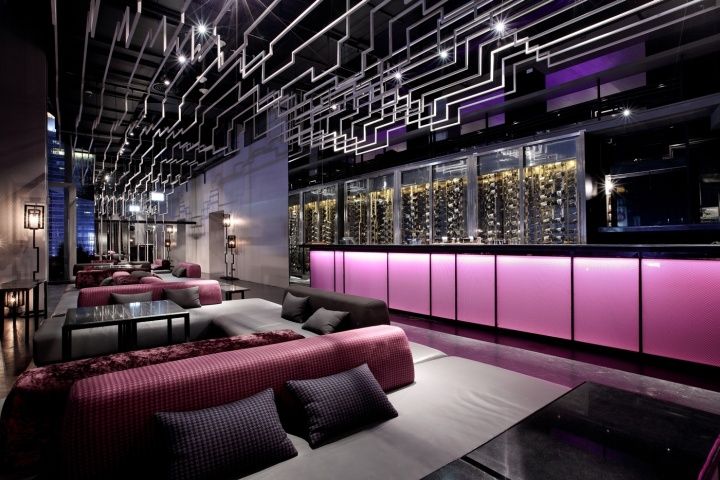
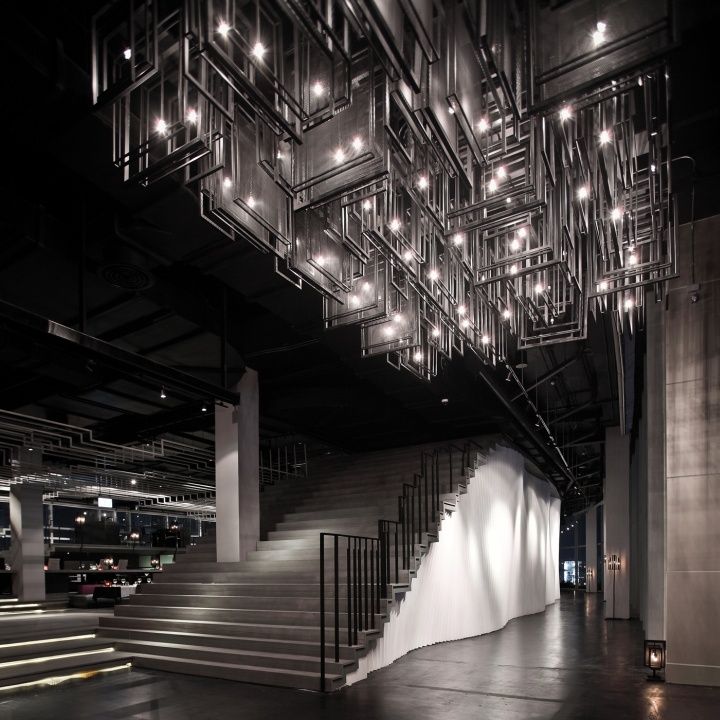
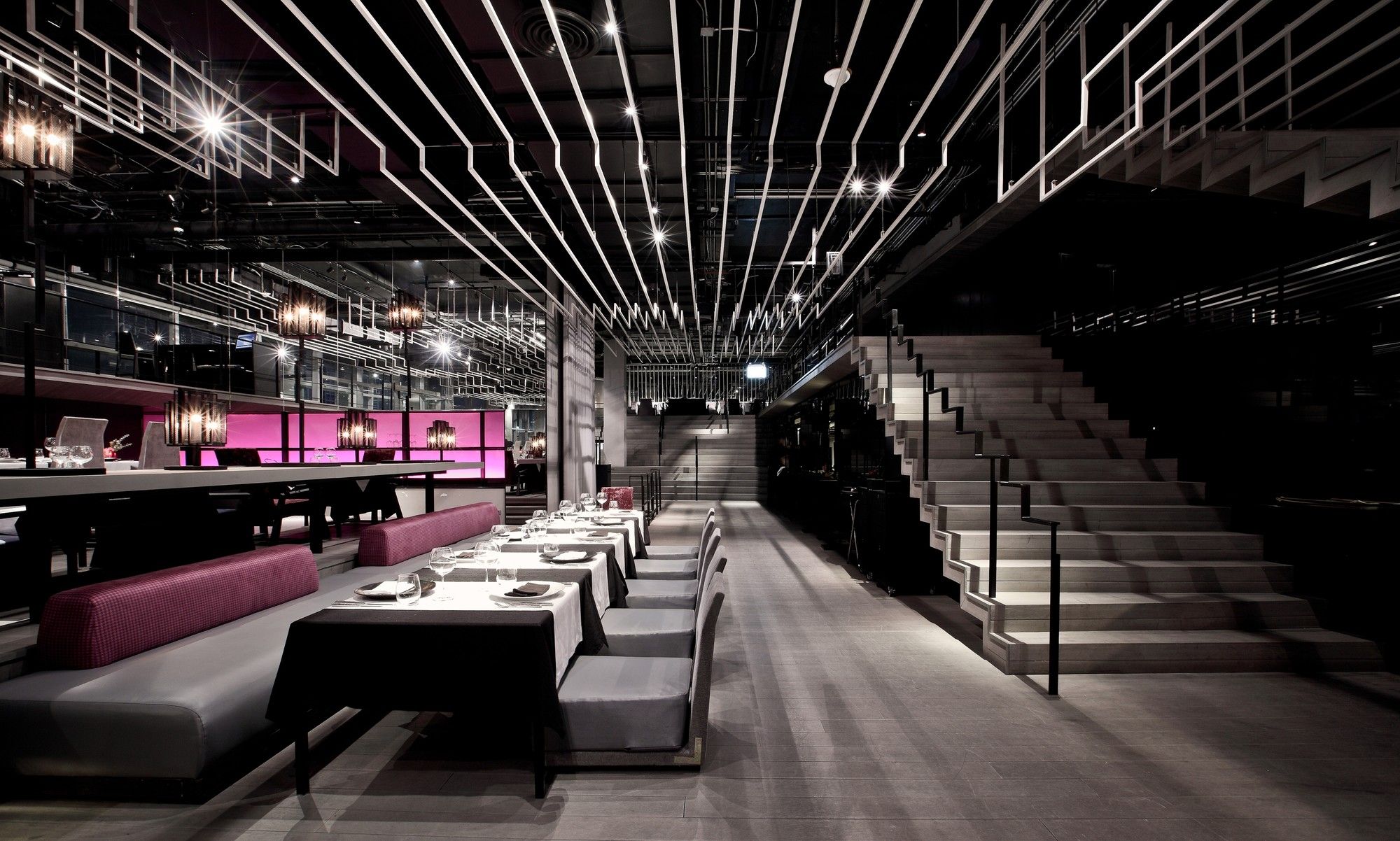
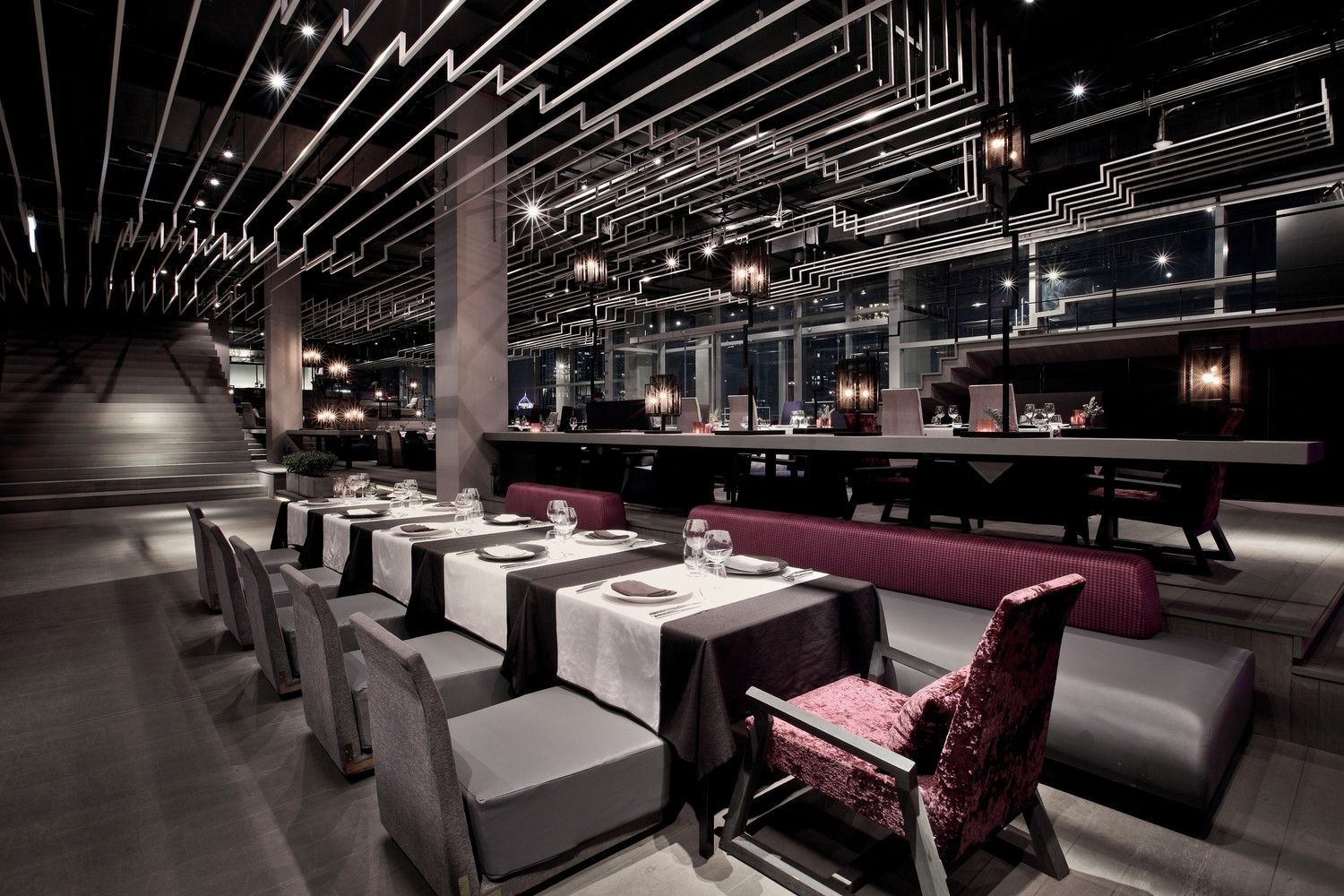
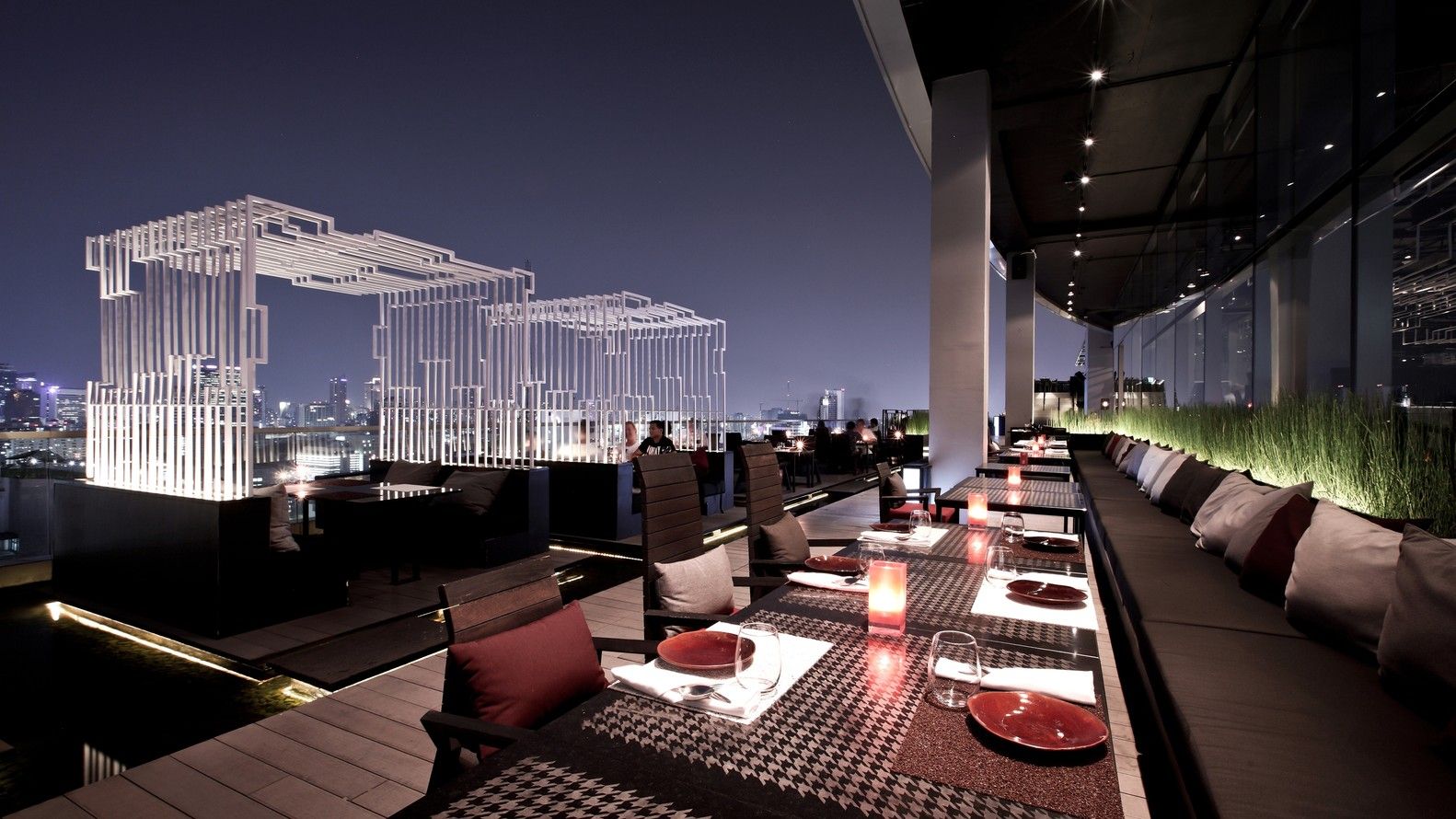
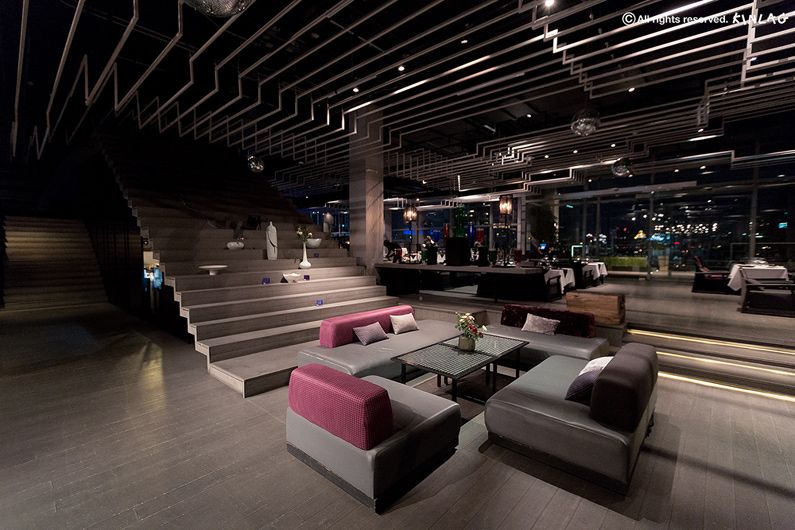
Courtesy of Department of ARCHITECTURE – Photography by Ketsiree Wongwan

